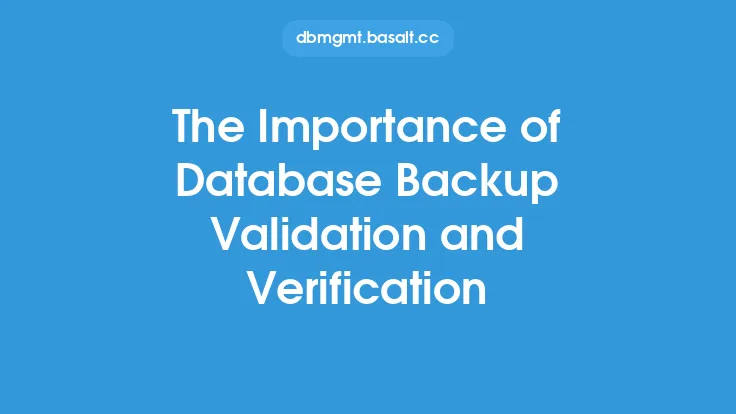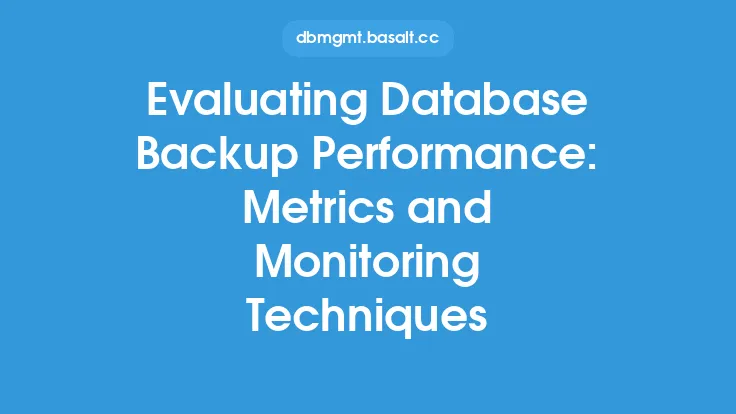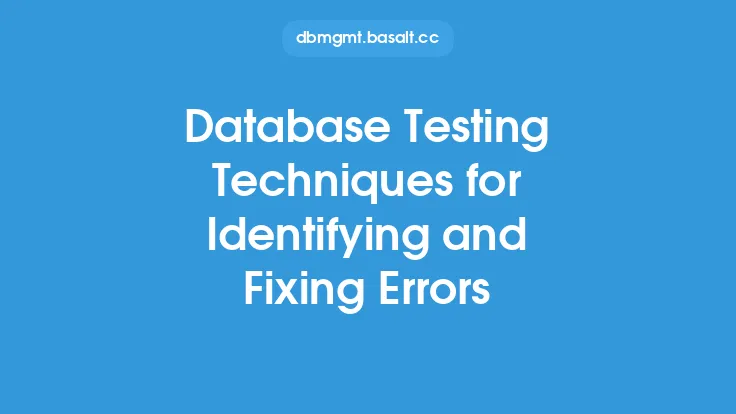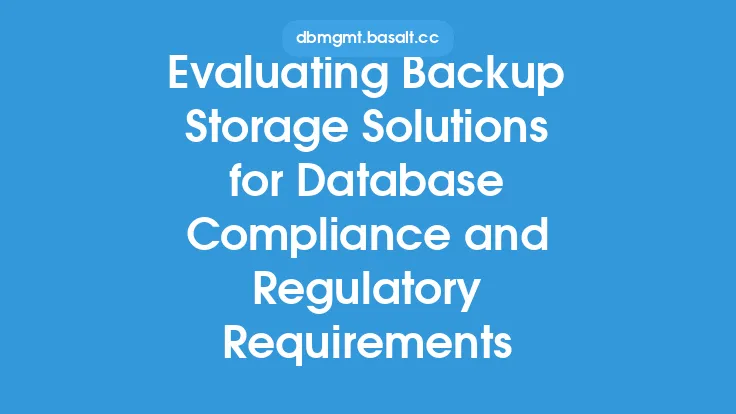Database backup is a critical aspect of ensuring data integrity and availability in the event of a disaster or data loss. However, simply creating backups is not enough; it is equally important to validate and verify these backups to ensure they are complete, consistent, and can be restored successfully. This process is crucial for maintaining the reliability and trustworthiness of database backups. In this article, we will delve into the techniques and best practices for database backup validation and verification, highlighting their importance and the methods used to achieve them.
Introduction to Backup Validation
Backup validation is the process of checking the integrity and consistency of database backups. This involves verifying that the backup is complete, that it can be restored, and that the data within the backup is accurate and consistent. Validation can be performed at various levels, including checking the backup files for corruption, verifying the database structure, and ensuring that the data is consistent with the production database. The goal of backup validation is to ensure that the backup is reliable and can be used to recover the database in case of a failure.
Techniques for Backup Validation
There are several techniques used for backup validation, each serving a specific purpose and providing different levels of assurance.
- Checksum Validation: This involves calculating a checksum for the backup files and comparing it with a previously calculated checksum. If the two match, it provides a high level of confidence that the backup file has not been corrupted during storage or transmission.
- Database Consistency Checks: These checks verify the internal consistency of the database backup. This can include checks for data integrity, index consistency, and the validity of database structures such as tables and views.
- Restore Verification: This is the most comprehensive form of validation, where the backup is restored to a test environment to verify that it can be successfully recovered and that the data is accurate and consistent. This method provides the highest level of assurance but is also the most resource-intensive.
Verification of Backup Restorability
Verifying the restorability of a database backup is a critical step in the validation process. This involves restoring the backup to a test database server to ensure that the backup can be successfully recovered. The verification process should include checks for data integrity, database consistency, and the functionality of database objects such as stored procedures and triggers. Automated scripts can be used to perform these checks, making the process more efficient and reducing the likelihood of human error.
Automated Validation and Verification Tools
The use of automated tools is highly recommended for database backup validation and verification. These tools can perform checks on a regular basis, providing continuous assurance that backups are valid and restorable. Automated tools can also reduce the administrative burden associated with manual validation and verification processes, allowing database administrators to focus on other critical tasks. Additionally, these tools can provide detailed reports and alerts, enabling prompt action to be taken in case of any issues detected during the validation and verification process.
Best Practices for Backup Validation and Verification
Implementing best practices for backup validation and verification is essential for ensuring the reliability and integrity of database backups.
- Regular Validation: Validate backups on a regular basis to ensure their integrity and restorability.
- Automate Validation: Use automated tools to perform validation and verification tasks to reduce administrative overhead and increase efficiency.
- Test Restore: Regularly test the restore process to ensure that backups can be successfully recovered.
- Document Processes: Document all validation and verification processes, including any issues encountered and their resolutions.
- Continuous Monitoring: Continuously monitor the validation and verification process to identify any trends or recurring issues that may indicate a problem with the backup process.
Challenges and Considerations
While backup validation and verification are critical for database recovery, there are several challenges and considerations that database administrators must be aware of.
- Resource Intensity: Validation and verification can be resource-intensive, particularly if restore verification is performed regularly.
- Storage Requirements: Validating and verifying backups require additional storage space for the test environment.
- Security: Ensuring the security of test environments used for validation and verification is crucial to prevent unauthorized access to sensitive data.
- Complexity: The complexity of the database and the backup process can make validation and verification more challenging, requiring specialized skills and tools.
Conclusion
Database backup validation and verification are essential components of a comprehensive database backup and recovery strategy. By implementing robust validation and verification techniques, database administrators can ensure that backups are reliable, consistent, and can be successfully restored in the event of a disaster or data loss. While there are challenges and considerations associated with these processes, the benefits of ensuring data integrity and availability far outweigh the costs. As databases continue to grow in size and complexity, the importance of backup validation and verification will only continue to increase, making them a critical aspect of database administration best practices.





